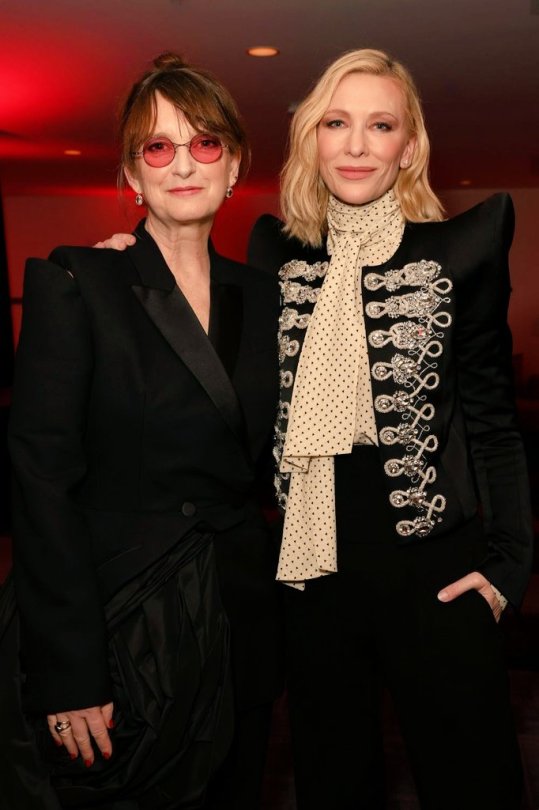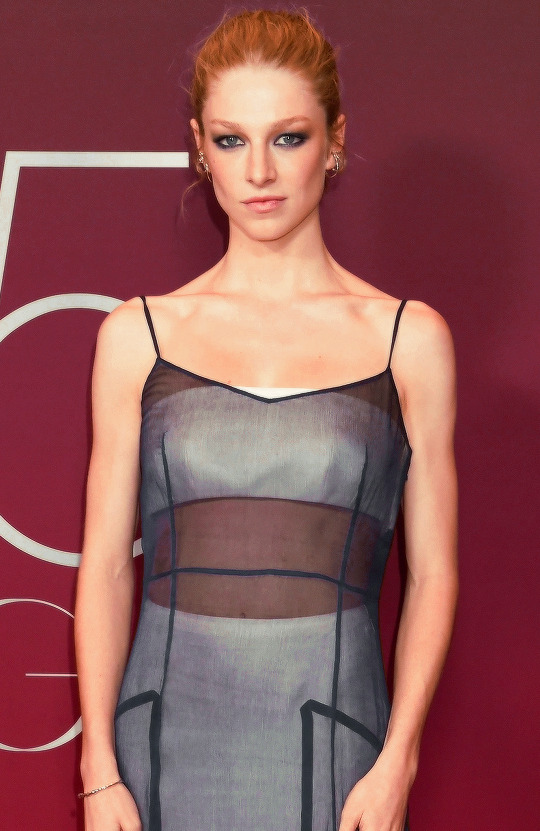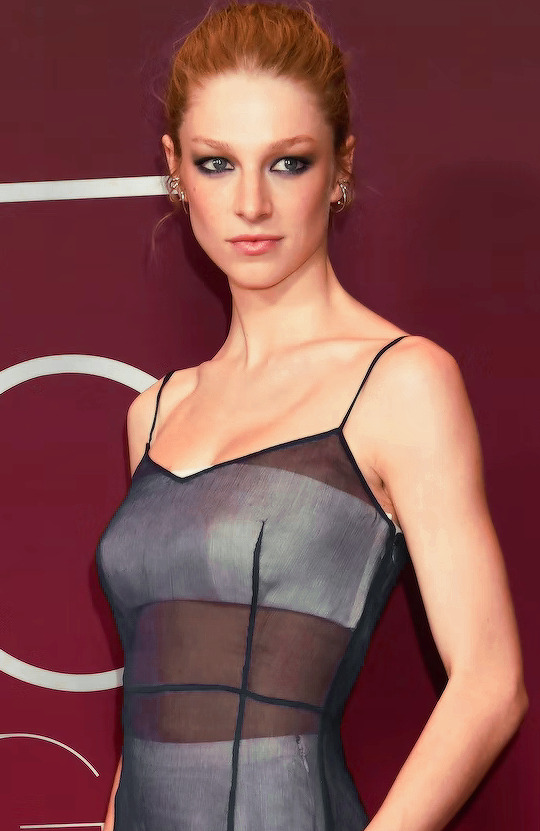#CDGA
Photo




Harvey and Laura Montgomery at the 25th Costume Designers Guild Awards, where Laura is nominated for Excellence in Sci-Fi/Fantasy Television for The Wedding!
#harvey guillén#harvey guillen#laura montgomery#costume designers guild awards#cdga#wwdits#what we do in the shadows#guillermo de la cruz#red carpets#february 2023
187 notes
·
View notes
Text









85 notes
·
View notes
Text
ROTFL! 😅🤣
His publicist/assistant Kate looks utterly DONE and too through w/those photographers on the red carpet lol 😅

Her face was like:

HELP! 😭 LOL
"She's my boss...."
#I know she needed a stiff drink after work rotfl 🤣#FINE FINE FINE!#meanwhile Austin is just laughing at the whole debacle lol 😅#austin butler#red carpet#CDGA
28 notes
·
View notes
Text





WOMEN SUPPORTING OTHER WOMEN.
Cate Blanchett supporting TÁR costume designer, Bina Daigeler at the 25th Costume Designers Guild Awards.
#cate blanchett#bina daigeler#costume designers#cdga#lydia tár#tar movie#TÁRNation#lgbtq#wlw#women in suits#women in film#beautiful women#fashion#style#women supporting women
20 notes
·
View notes
Text
Como dos gotas de agua
"yo odiaba a un demonio con pelo rubio y pequeñas mechas azules llamado Lior"
L de Lucifer
Estoy segura.
1 note
·
View note
Photo

@guardioesdoaltissimo @desbravadoresaceam @desbravadorunob @desbravatudo_ @desbravadoresdsa @desbravadores18regiao @desbrava.world @iasdcentraltefe1 @pr.anderson.carneiro @pr_vitoroliveira @prdis #CDGA# https://www.instagram.com/p/CmCSMIGuEptNq8ByFPrnE70SJVJhy6SxA0xeIo0/?igshid=NGJjMDIxMWI=
0 notes
Text


Hunter Schafer → 25th Costume Designer Guild Awards
#hunter schafer#my*edit#**#cdga 2023#dailywomen#femalestunning#dailylgbtq#lgbt#ladiesofcinema#femaledaily#userladiesblr#flawlessbeautyqueens#dailygingerheads#userquel#userreh#tuserdee#userrobin#red hair suits her so well!!!#q#BUT this sharpening is making me uncomfortable#sorry babe couldn't properly enhance your beauty
161 notes
·
View notes
Text

ANDREW GARFIELD
at the 24th Costume Designers Guild Awards 2022
#andrew garfield#and your beautiful doe eyes#didn’t mean to moan like that my bad#his face is truly beautiful here#this picture live rent free in my mind#i'd like to run my fingers through your curls#i'd kiss between your eyebrows#he's so beautiful it hurts#the things i'd would let andrew garfield do to me#why is he so cute and so hot at the same time#god i need to [redacted] with him so much#costume designers guild awards 2022#cdga 2022#the tick tick boom era was something else#tick tick boom#peter parker#spider man#the amazing spider man#tasm#tasm peter parker#tasm peter#andrew peter parker#andrew peter#sincericida
31 notes
·
View notes
Text


Hunter Schafer
Source: https://www.instagram.com/p/CpRRxygrKy8/
69 notes
·
View notes
Text
now that ive been selfshipping with the whole midnight crew (before it was just boxcars) i thought of shipping GA with both boxcars and deuce at the same times. their ship name? the abcd.
#✧ post#✱ ocs#♡ paper mache / heartcuts / hbga#^^ subject to change if this becomes reality#though i just might make two separate ship tags#one for them three#and one for cdga#the hbga tag stays if this happens
4 notes
·
View notes
Text

Congratulations to Angela Bassett on winning the CDGA Spotlight Award
20 notes
·
View notes
Photo

Harvey Guillén and Laura Montgomery at the 25th Costume Designers Guild Awards Portrait Studio!
#harvey guillén#harvey guillen#laura montgomery#costume designers guild awards#cdga#wwdits#what we do in the shadows#guillermo de la cruz#photoshoots#plus size model#february 2023
138 notes
·
View notes
Text
25th Costume Designers Guild Awards — Film Winners
Excellence in Contemporary Film
“Glass Onion: A Knives Out Mystery” (Jenny Eagan) — WINNER
“Nope” (Alex Bovaird)
“Tár” (Bina Daigeler)
“Top Gun: Maverick” (Marlene Stewart)
“Women Talking” (Quita Alfred)
Excellence in Sci-Fi/Fantasy Film
“Avatar: The Way of Water” (Deborah L. Scott)
“Black Panther: Wakanda Forever” (Ruth E. Carter)
“Everything Everywhere All at Once” (Shirley Kurata) — WINNER
“Hocus Pocus 2” (Salvador Perez)
“Thor: Love and Thunder” (Mayes C. Ruebo)
Excellence in Period Film
“Babylon” (Mary Zophres)
“Don’t Worry Darling” (Arianne Phillips)
“Elvis” (Catherine Martin) — WINNER
“Mrs. Harris Goes to Paris” (Jenny Beavan)
“The Woman King” (Gersha Phillips)
Honorees
Career Achievement: Deborah L. Scott
Spotlight: Angela Bassett
Distinguished Collaborator: Bette Midler
Distinguished Service: Rachael M. Stanley
17 notes
·
View notes
Text

HUNTER SCHAFER at the Costume Designer Guild Awards on February 27th 2022 wearing custom PRADA
Hunter looks amazing in this custom Prada look. The sheer dress trend is still in full force, and I love that she’s wearing a full length skirt and bra under the sheer material. Instead of feeling skimpy and exposed Hunter just looks totally cool. I love that the dress is blue as well, just a really fun look.
#hunter schafer#cdga awards#prada#euphoria#beautiful#euphoria girls#euphoria hbo#jules vaughn#style#love#fashion#pretty#gorgeous#fashion journalism#femaledaily#celebrity fashion#stunner babe#celebrity style#fancyschmancy#red carpet fashion#hot celebs#beauty#makeup#red carpet#red carpet looks#red carpet dress#actress#celebs#celebrities#celebrity
7 notes
·
View notes
Photo

Christina Ricci | Raisa Vanessa Fall 2022 gown | CDGA Awards | 2023
#pc: celebsfirst#christina ricci#raisa vanessa#raisa vanessa fall 2022#cdga awards#2023 cdga awards#2023
5 notes
·
View notes
Text
*Dr. Smita Goel Homeopathy Clinic*
www.thehomeopathyclinic.co.in
A person with short stature, or restricted growth, does not grow as tall as other people of the same gender, age, and ethnicity. The person's height is below the 3rd percentile.
Short stature can be a variant of normal growth, or it may indicate a disorder or condition.
Growth rate is an important indicator of overall health. Children who do not reach the 5th percentile by the age of 5 years are said to be small for gestational age (SGA). A pediatrician will look out for signs of "failure to thrive."
Early intervention can prevent future problems in many cases.
Normally, at 8 years of age, a child's arm span is around the same as their height. If these measurements are out of proportion, this may be a sign of disproportionate short stature (DSS), sometimes known as "dwarfism."
Fast facts on short stature
Here are some key points about short stature. More detail is in the main article.
• Short stature can happen for a wide range of reasons, including having small parents, malnutrition, and genetic conditions such as achondroplasia.
• Proportionate short stature (PSS) is when the person is small, but all the parts are in the usual proportions. In disproportionate short stature (DSS), the limbs may be small compared with the trunk.
• If short stature results from a growth hormone (GH) deficiency, GH treatment can often boost growth.
• Some people may experience long-term medical complications, but intelligence is not usually affected.
Causes
Growth depends on a complex range of factors, including genetic makeup, nutrition, and hormonal influences.
The most common cause of short stature is having parents whose height is below average, but around 5 percent of children with short stature have a medical condition.
Conditions that can underlie short stature include:
• Undernutrition, due to a disease or lack of nutrients
• Hypothyroidism, leading to a lack of growth hormone
• A tumor in the pituitary gland
• Diseases of the lungs, heart, kidneys, liver, or gastrointestinal tract
• Conditions that affect the production of collagen and other proteins
• Some chronic diseases, such as celiac disease and other inflammatory disorders
• Mitochondrial disease, which can affect the body in different ways, including growth
Sometimes, an injury to the head during childhood can lead to reduced growth.
A lack of growth hormone can also lead to delayed or absent sexual development.
Rheumatologic diseases, such as arthritis, are linked to short stature. This may happen because of the disease, or as a result of the glucocorticoid treatment, which can affect the release of growth hormone.
Disproportionate short stature (DSS) usually stems from a genetic mutation that affects the development of bone and cartilage and undermines physical growth.
The parents may not have short stature, but they may pass on a condition that is linked to DSS, such as achondroplasia, mucopolysaccharide disease, and spondyloepiphyseal dysplasia (SED).
Types
There are different types and causes of short stature, or restricted growth, and they will present differently. Because the range of conditions is so broad, restricted growth can be classified in various ways.
One categorization is:
• Variant restricted growth
• Proportionate short stature (PSS)
• Disproportionate short stature (DSS)
Each of these categories includes a number of types and causes of short stature.
Variant restricted growth
Sometimes a person is small but otherwise healthy. This can be referred to as variant restricted growth. It may happen for genetic or hormonal reasons.
If the parents are also small, this can be called familial short stature (FSS). If it stems from a hormonal issue, it is a constitutional delay in growth and adolescence (CDGA).
The limbs and the head develop in proportion with the spine, and the individual is otherwise healthy.
Growth happens throughout the body, so the legs, for example, are in proportion with the spine.
In most cases, the individual's parents are also small, but sometimes small stature happens because the body does not produce enough growth hormone (GH), or the body does not process growth hormone properly. This is known as GH insensitivity. Hypothyrodism can lead to low hormone production.
Growth hormone treatment during childhood may help.
Proportionate short stature (PSS)
Sometimes, overall growth is restricted, but the person's body is in proportion, and the individual has a related health problem. This is known as proportionate short stature (PSS).
If the individual is heavy for their height, this can suggest a hormone problem. The problem could be hypothyroidism, excess glucorticoid production, or too little GH.
A person who is small and their weight is low for their height may be experiencing malnutrition, or they may have a disorder that leads to malabsorption.
Whatever the underlying reason, if it affects overall growth, it may impact development in at least one body system, so treatment is needed.
During adulthood, a person with this type of restricted growth is more likely to experience:
• osteoporosis
• cardiovascular problems
• reduced muscle strength
Rarely, there may be cognitive problems, or problems with thinking. This depends on the cause of the short stature.
Disproportionate short stature (DSS)
Disproportionate short stature (DSS) is linked to a genetic mutation. The parents are usually of average height. As with other types of short stature, a range underlying causes is possible.
An individual with DSS will be small in height, and they will have other unusual physical features. These may be visible at birth, or they may develop in time as the infant develops.
Most individuals will have an average-sized trunk and short limbs, but some people may have a very short trunk and shortened, but disproportionately large limbs. Head size may be disproportionately large.
Intelligence or cognitive abilities are unlikely to be affected unless the person has hydrocephalus, or too much fluid around the brain.
Achondroplasia underlies around 70 percent of cases of DSS. It affects around 1 in 15,000 to 1 in 40,000 people.
Features include:
• an average-sized trunk
• short limbs, especially the upper arms and legs
• short fingers, possibly with a wide space between the middle and ring fingers
• limited mobility in the elbows
• a large head with a prominent forehead and flattened bridge of the nose
• bowed legs
• lordosis, a progressive development of a swayed lower back
• average adult height of 4 feet, or 122 cm
Hypochondroplasia is a mild form of achondroplasia. It may be difficult to differentiate between familial short stature and achondroplasia.
Achondroplasia and hypochondroplasia result from a genetic mutation.
Genetic conditions, such as Turner syndrome, Down syndrome, or Prader Willi syndrome, are also linked to DSS.
Diagnosis
Some types of short stature can be diagnosed at birth. In other cases, routine visits to a pediatrician should reveal any abnormal growth pattern.
The doctor will record the child's head circumference, height, and weight.
If the doctor suspects restricted growth, they will carry out a physical examination, look at the child's medical and family history, and possibly carry out some tests.
These may include:
An x-ray, to assess for problems with bone development
An insulin tolerance test, to check for a deficiency in the growth hormone insulin-like growth factor-1 (IGF-1).
In this test, insulin is injected into a vein, causing blood glucose levels to drop. Normally, this would trigger the pituitary gland to release growth hormone (GH). If GH levels are lower than normal, there may be a GH deficiency.
Other tests include:
• a thyroid-stimulating hormone test, to check for hypothyroidism
• a complete blood count, to test for anemia
• metabolic tests, to assess liver and kidney function
• erythrocyte sedimentation and C-reactive protein tests, to assess for inflammatory bowel disease
• urine tests can check for enzyme deficiency disorders
• tissue transglutinase and immunoglobulin A tests, for celiac disease
• imaging scans, such as an x-ray of the skeleton and the skull or an MRI, can detect problems with the pituitary gland or hypothalamus
• bone marrow or skin biopsies may help confirm conditions associated with short stature
Treatment
Treatment will depend on the cause of the short stature.
If there are signs of malnutrition, the child may need nutritional supplements or treatment for a bowel disorder or other condition that is preventing them from absorbing nutrients.
If growth is restricted or delayed because of a hormonal problem, GH treatment may be necessary.
Pediatric hormone treatment: In children who produce too little GH, a daily injection of hormone treatment may stimulate physical growth later in life. Medications, such as somatropin, may eventually add 4 inches, or 10 centimeters, to adult height.
Adult hormone treatment
: Treatment for adults can help protect against complications, for example, cardiovascular disease and low bone mineral density.
Somatropin, also known as recombinant GH, might be recommended for people who:
• have a severe growth hormone deficiency
• experience impaired quality of life
• are already receiving treatment for another pituitary hormone deficiency
Adult patients generally self-administer daily with an injection.
Adverse effects of somatropin include headache, muscle pain, edema, or fluid retention, problems with eyesight, joint pain, vomiting, and nausea.
The patient may receive treatment to control chronic conditions, such as heart disease, lung disease, and arthritis.
Treatment for DSS
As DSS often stems from a genetic disorder, treatment focuses mainly on the complications.
Some patients with very short legs may undergo leg lengthening. The leg bone is broken and then fixed into a special frame. The frame is adjusted daily to lengthen the bone.
This does not always work, it takes a long time, and there is a risk of complications, including:
• pain
• the bone forming badly or at an inappropriate rate
• infection
• deep vein thrombosis (DVT), a blood clot in a vein
Other possible surgical treatments include:
• use of growth plates, where metal staples are inserted into the ends of long bones where growth takes place, to help bones grow in the right direction
• inserting staples or rods to help the spine form the right shape
• increasing the size of the opening in the bones of the spine to reduce pressure on the spinal cord
Regular monitoring can reduce the risk of complications.
Complications
A person with DSS may experience a number of complications.
These include:
• arthritis later in life
• delayed mobility development
• dental problems
• bowed legs
• hearing problems and otitis media
• hydrocephalus, or too much fluid in the brain cavities
• hunching of the back
• limb problems
• swaying of the back
• narrowing of the channel in the lower spine during adulthood and other spine problem
• sleep apnea
• weight gain
• speech and language problems
Individuals with proportionate short stature (PSS) may have poorly developed organs and pregnancy complications, such as respiratory problems. Delivery will normally be by cesarean section.
Outlook
Most people with short stature will have a normal life expectancy, and 90 percent of children who are small for their age at 2 years will "catch up" by adulthood.
The 10 percent who do not catch up are likely to have a condition such as fetal alcohol, Prader-Willi, or Down syndrome.
A person with achondroplasia can also expect a normal lifespan.
However, some serious conditions that are linked to some cases of short stature can be fatal.

#greater noida#best homeo clinic in indirapuram#homeopathy for ibs#ghaziabad#homeopathy clinics#homeopathy cold treatment in indirapuram#homeopathy doctor#best skin doctor in ghaziabad#homeopathy#homeopathy medicine#best homeopathy clinic in indirapuram#best homeopathy doctor#homeopathy skin allergies treatment in indirapuram#homeopathy skin allergies treatment in noida#homeopathy specialist in indirapuram#homeopathy treatment#laser treatment in indirapuram#skin specialist in indirapuram#indirapuram#ghaziabad latest news#ghaziabadnews#best schools in ghaziabad#ayurvedic doctor in ghaziabad#wave city ghaziabad#greater noida west#child doctor in noida#child specialist in noida#noida news#nursery school in greater noida#noida
3 notes
·
View notes